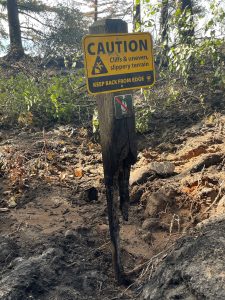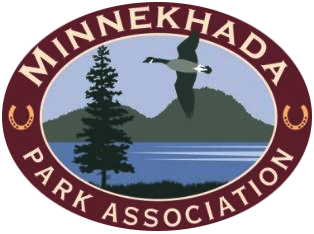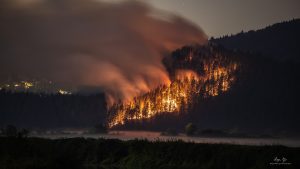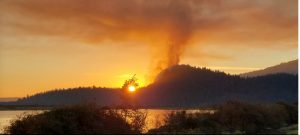Photo by: Hagen Pflueger
October 1st
The fire at Minnekhada Park was reported to authorities around 7:30 AM on Saturday morning, October 1st. Minnekhada Park Association was on scene setting up for our Nature Table and as the day progressed, we were able to get a first-hand look how quickly the fire escalated that morning. When the fire was reported by two hikers early that morning it was initially reported as a small fire near the High Knoll. At that time, the city emergency response and Metro Vancouver Regional Parks was made aware of the fire. Metro Vancouver staff does have some training on how to fight small forest fires, so they made their way towards the fire at High Knoll with their firefighting gear. Upon arriving, they realized what might have started out as a small fire quickly escalated to a fire too big for Metro Vancouver staff to handle and too far into the forest for city first responders on their own. By mid-morning most of the trails leading to the High Knoll were closed. Soon BC Wildfire Services also tagged in and by 1 PM that Saturday, the fire had spun out of control, and the park was forced to shut down. What started as a small fire quickly turned into a 28 day firefighting effort to save Minnekhada.
October 2nd -28th
By Tuesday, October 4th the fire was 100% contained. The trails within the park helped contain the fire, and a 50-foot wet line was placed on perimeter of the fire. There was one occasion where the fire jumped the trail and moved to the other side, but it was quickly contained. The fire was contained to about 14 ha with about half of it being within the regional park, and the other half within the wilderness area.
The challenging terrain of the area and fire intensity made it a difficult fire to fight. Even after a few days of heavy rain, crews continued running into hotspots. The efforts to put out the fire included grounds crews of up to 50 people per day and air support. The air support given by the helicopters (up to 5) and the drones was critical in stopping the fire and finding the remaining hotspots. New fire trails were made across the park to lay the hoses down and allow ground crew easier access. Water was pumped from both the Marsh at Minnekhada and from Pitt River by hose. The firefighting efforts by all concerned lasted a total of 28 days and officially ended on October 28th, 2022.
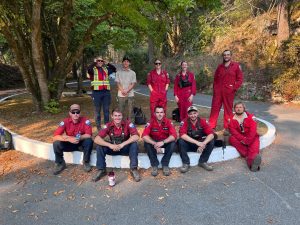
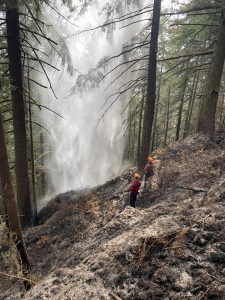
Next Steps:
The fire was said to be a slow creeping ground fire meaning that most of the fire stayed at ground level or below and did not reach the tree canopy. Many trees survived the initial fire, with mininal damage to the tree canopy. However, many trees have fallen since the fire, and will continue to fall throughout the winter storms, as their roots have been severely burned making them unstable. Although, the wildfire covered a significant area, the fire intensity was quite variable, and it is likely that for the most part the vegetation will recover over the next few years. The cause of the fire was also investigated and although the specifics of how the fire started is still unknown we do know that it was caused by human activity.
Currently, Metro Vancouver is moving to the next steps which is to assess High Knoll and fire impacted trail areas for increased soil erosion, landslides, snow, and dangerous trees. The reopening of trails will be dependent on the results of these assessments and is not expected to happen until later in 2023. Metro Vancouver is still actively working on restoration plans for the affected areas. These plans will probably include a combination of passively allowing the ecosystem to recover and active restoration to help move things along. As the ecosystem begins to recover, it provides us with a unique opportunity to monitor the recovery process.
